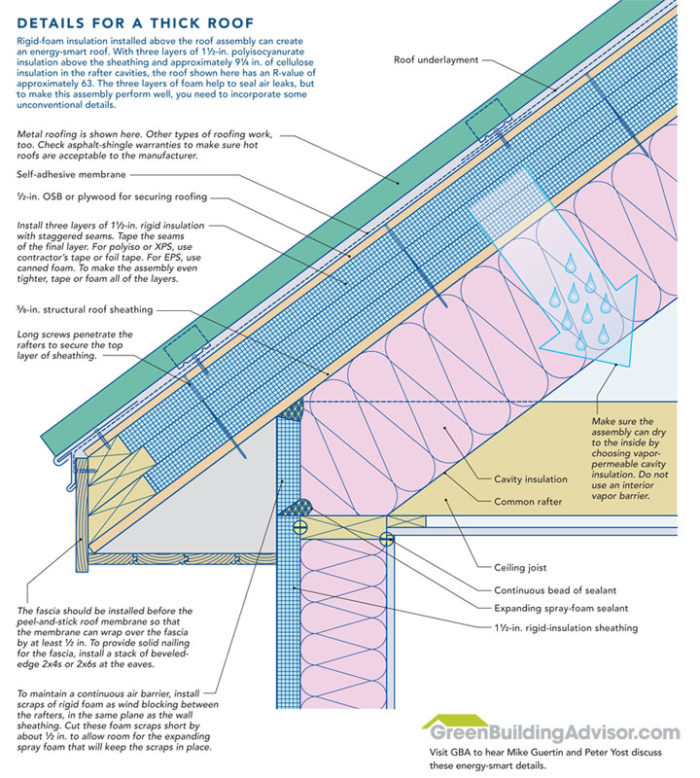
Image Credit: Steve Baczek
Attics are a great place to reclaim living space without the expense of an addition. If you have the headroom, you can gain at least one extra room by finishing your attic.
But with energy codes requiring more and more insulation, it can be difficult to pack all of that R-value into the skinny little rafters that are common in older houses.
One solution is to add layers of rigid foam under the rafters, but this cuts in to living space. A better solution is to add layers of foam to the outside of the roof. This not only boosts the roof’s R-value, but it breaks the thermal bridge of the rafters and increases the air-tightness of the whole roof assembly.
The takeaways:
1. The higher the R-value, the better, and where you put the insulation matters.
2. Exterior insulation solves a lot of thermal nosebleeds, but the amount of foam you put on the outside needs to be proportional with the amount of insulation on the inside, within the rafter cavity. You need enough exterior foam to prevent condensation on the inside of the roof sheathing by keeping that plywood warm.
3. Is it a good idea to make an unvented roof with a lot of foam on the outside? Yes. Roofs are like walls that are severely out of plumb, and an unvented wall can work.
Just make sure that you don’t do it willy-nilly: if you are going to ask more of your buildings, you need to ask more of your details.
For more roof design details, browse the detail library in the roof/wall connections section.
Weekly Newsletter
Get building science and energy efficiency advice, plus special offers, in your inbox.





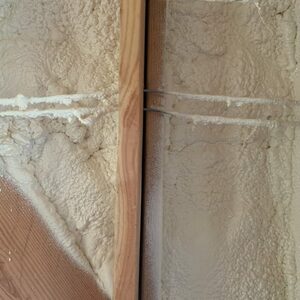
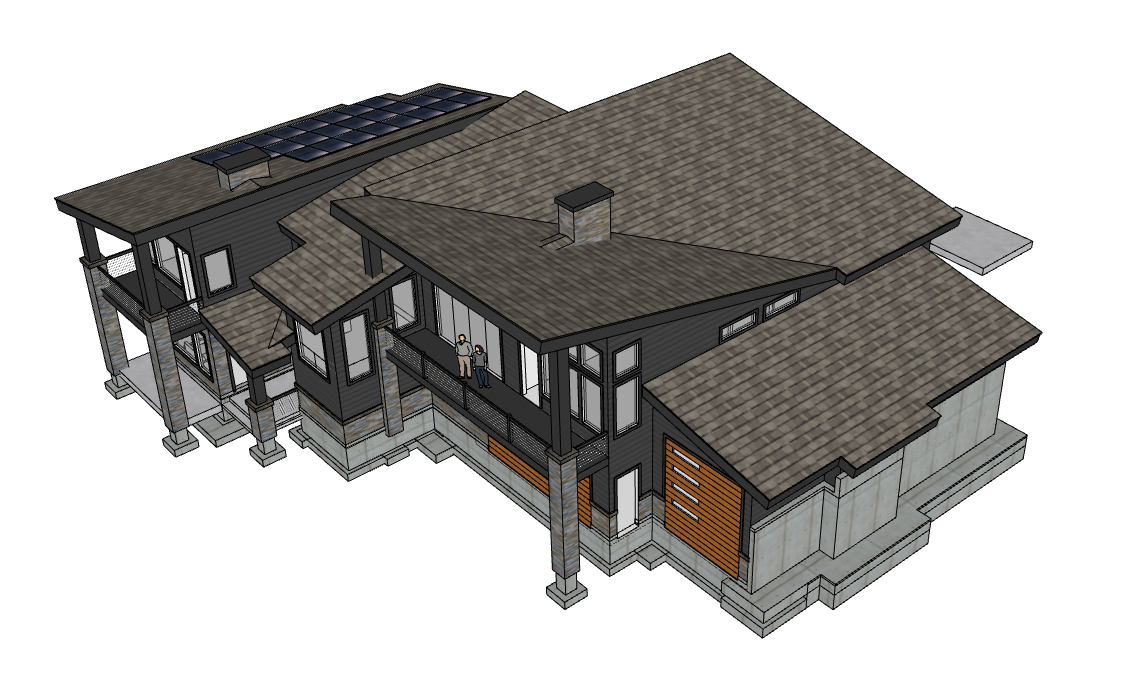
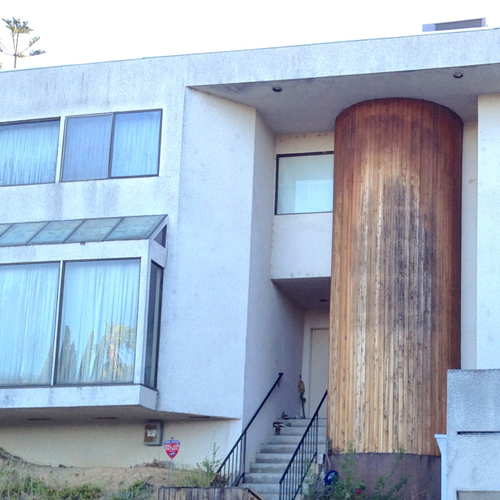
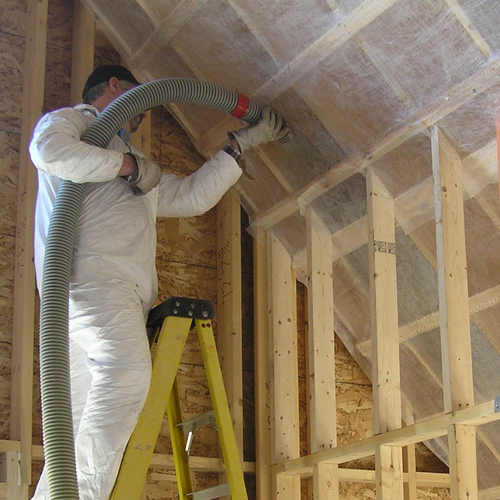






27 Comments
well insulated roof/ attic to vent or not to vent??
I live in central Louisiana on the line between 2 and 3 climate zone. High summer temps with high humidity. I had a professional energy audit with blast door etc. It was helpful. Home is 35+ yrs old.
One question surfaced. Retrofit contractors are beginning to push sealing the attic with spray foam. Working in the attic they seal soffits, ridges vents, turbines, etc. and spray a layer of foam on the underside of the plywood roof (creating a sandwich of foam, plywood, roofing felt, and asphalt shingles. How does this approach affect roof life? I could not get a straight answer and did not adopt the foam approach. Also there is the matter of humidiity.
Energy audit is an excellent investment especially in older homes built before code enforcement.
Response to Calvin Meier
Calvin,
You asked, "How does this approach affect roof life?" I assume your question concerns the roofing rather than the lifespan of the sheathing and rafters.
The short answer: it depends on what type of roofing you have. I have never seen any evidence that ventilation affects the life of metal roofing, or concrete tile roofing, or clay tile roofing.
The type of roofing that usually leads to this question is asphalt shingle roofing. To answer this question, we need to know:
1. Does roof ventilation lower roofing temperatures?
2. Does roofing temperature affect shingle longevity?
The answer to the first question is, not much. Shingle color has a much greater affect on roofing temperatures than ventilation. So if you want to keep your shingles cool, choose white shingles, not dark colored shingles.
The answer to the second question is, probably, but not much. Since roofing manufacturers have been selling black shingles for years, and since they honor their shingle warranties on black shingles, it's fair to say that hot shingles still last for quite a while.
Finally, note that many builders have learned that shingle warranties are basically worthless, because shingle manufacturers often dispute claims, and because labor is never covered, and because coverage is pro-rated depending on the age of the shingle at the time of the claim.
In Louisiana unvented is THE way to go!
Vented attics don't cool roofs (much), but in cool/cold climates they purge the attic and roof deck of moisture coming from within conditioned space, sparing it from accumulating humidity all winter and rotting. In the Gulf coast states the winter outdoor temps are above the dew point of conditioned-space air, and little or no moisture can accumulate in the roof deck in wintertime from interior moisture drives.
But in summer a vented attic draws in great volumes of high-humidity air into the attic to condense on the cool floor joist edges of a an air conditioned space, or if (as is common) the air handler & ducts are up there, on the HVAC equipment causing major dripping if it doesn't have sufficient insulation to keep the attic-exposed surfaces above the much higher OUTDOOR dew point. Either way, insulating the roof deck and sealing the attic brings the attic within the pressure and thermal boundary of the building- the dew point of the air in the attic is now going to be the same as in the conditioned space, even if it's warmer than the conditioned space.
And by sealing the attic you've blocked the stack effect forces that would otherwise be drawing hot humid air into the conditioned space, sucking air conditioned air out every air leak in the attic floor/upper-floor ceiling.
There's also a hurricane resistance benefit to air-sealing the attic, since it substantially lowers the upward lift forces on the roof deck (at least until a flying 2x4 takes out a window or something.)
The concern/need for exterior rigid foam is primarily an issue for US zones 4 or higher, but also the colder edge of zone 3. Central LA is the warm edge of zone 3 or zone 2, so even open cell foam would be fine, but an inch or two of closed cell would be sufficiently protective from winter moisture drives even in zone 5.
At 3" closed cell foam becomes structural, and the roof would be even more hurricane-proof, but at $3/square foot it's a pricey R18 (center bay). For the same money you could put in ~8" of open cell spraying over the rafters and get better than R25.
Whatever you do, don't let the foam contractors talk you into removing any attic floor insulation- it's still doing you plenty of good, and won't cause a moisture problem. Pull it back at the soffits to let them seal thoroughly there though, but roll it back in when they're done.
Are two layers of roof sheathing required?
Perfect timing with the article. I am putting up a building, and have some reclaimed 3" rigid SM I want to put on top of my 2x12 roof rafters. I was then going to roll out a layer of Typar water/air barrier, and strap over that with 2x4s to attach the metal roof to on 24" centres. I know its not as good as overlapping joints in the foam, but the 3" thick sheets were salvaged from a commercial roof demolition.. If I have to, I could "glue" the edges of the sheets together with some spray foam as I put it down..
Can I eliminate the two layers of sheathing plywood?
My local building dept, and engineer has already approved the plan using just 2x4 strapping without sheathing, but I did not include the foam.
Also, in my area, an ice and water shield is required, Most here use the peel and stick, for the first 3' of roof at least.. In this assembly, I cant see it being necessary, but if requested by the building dept, would it do any harm?
Response to R. Hunt
R. Hunt,
You're right -- with many types of steel roofing, 2x4 purlins, 24 inches on center, are adequate for screwing down the roofing. You don't necessarily need a second layer of plywood.
But I have two concerns:
1. You need to pay attention to airtightness, so it is important to seal the seams between the rigid foam with canned spray foam, high quality tape, or both -- especially if you are using only one layer of rigid foam.
2. I don't know what you mean by "3-inch rigid SM." Is that XPS? EPS? Polyisocyanurate? Something else? In any case, 3 inches of rigid foam is not likely to satisfy minimum R-value requirements, so check your local code. If you have more insulation between your rafters, of course, that's a different story. But if the 3 inches of rigid foam is all the insulation you've got, I imagine it isn't enough.
Thank You Mr. Holladay, The
Thank You Mr. Holladay,
The foam I have is 3" R-15 Type 4 butt edge Extruded Polystyrene Foam Insulation.
Agreed, the attention to detail on the seams of the foam will be done carefully.
And I was going to fill, or partially fill the cavity of the 2x12 rafters with the spray in cellulose, or mineral wool batts to meet code requirements. Then finish the interior with NO vapour barrier and probably t&g pine.
If my budget allowed, I would have an inch of spray foam applied inside the rafters first, just to help seal it up a bit. But that will be too costly for me at this point...
Incidentally, I was going to build the walls with the same approach, but will have a reverse board and batten solid pine siding instead of steel. And for the concrete basement walls from the main floor down to grade, I am going to cover the foam with cement board, and later apply thin stone veneer.
Detail Question
I'm working on a house design in Zone 5A. Site conditions prevent a basement, so it will be slab on grade thus storage will be needed, suggesting a conditioned attic.
In this detail, the rafter tails are seemingly cut flush with the outside face of stud.
1. What is the grey triangle into which the fascia and soffit are nailed?
2. If the fascia need replacing down the road, is it a nightmare that the peel and stick wraps down onto it?
3. The 2 upper long screws are always into wood (the rafters). Is the lowest screw hitting wood (the gray triangle) or a void?
Thanks,
John Rockwell
Response to John Rockwell
John,
Q. "What is the grey triangle into which the fascia and soffit are nailed?"
A. That is the rafter tail. The rafter extends to the soffit; there is a bird's mouth cut to accommodate the top plate of the wall.
Q. "If the fascia need replacing down the road, is it a nightmare that the peel and stick wraps down onto it?"
A. No. Replacement of the fascia shouldn't be difficult. The peel-and-stick membrane only laps the fascia by 1/2 inch.
Q. "The 2 upper long screws are always into wood (the rafters). Is the lowest screw hitting wood (the gray triangle) or a void?"
A. The screws extend into the rafters. The gray triangle is a rafter tail.
Response to John Rockwell RE: Rafter tail
Do you really want to extend your rafters past the thermal envelope & create a thermal bridge if you're really concerned with thermal performance and avoiding condensation in the rafter bays/cavities. I know it seems like a small point, but if you're going to all the effort, i.e. money, to create this great assembly, Why not take it a small step further and eliminate that thermal bridge?
Some other comments about the detail. 1) No exterior sheathing is shown or mentioned. I know you can eliminate it, but a lot of code officials would probably nix a structure without some sort of sheathing. 2) The transition between the attic floor/ceiling joists isn't really shown. How are keeping all that nice cellulose in place? 3) If the attic was actually going to be used as finished space, that transition between the floor joists and rafters is even more important and even harder to detail and finish. Suggestions.
I have a situation similar to
I have a situation similar to the detail presented in the referenced presentation but came away with a variant solution that I would be interested in your comments. I have a 1980 chalet that has an exposed grommet metal roof over 1/2" polyiso over 2x6 T&G on 4x6 @4' o.c. with an 11/12 pitch that needs to be replaced. I am in Leavenworth, Wa, zone 5 (high dessert but can get a lot of wet snow probably 2' by the end of this week). Some photos @ http://www.iciclechalet.com. The loft has no head room for insulation on the interior so all the insulation (planning 7.5" EPS) must be on the exterior. Using Joe's "perfect wall: best place to control this air thing is on the outside of the structure—but under the insulation layer so the air does not change temperature" and my bumpy substrate restriction (2x6 T&G v-notch so no "wet flash") I plan on using Carlise's WIP 100 which will seal all of those long Trufast SIP fasteners. Since these require 1" minimum embed I didn't understand how you could use 3/8" sheathing in your example detail.
Advice on the number of fasteners per 4x8 sheet of OSB varies greatly from 8 to 24, what is your take with an 85mph wind and 85# snow load and 11/12 pitch? Staggering the joints and insulation layers sounds great in theory but considering installation difficulties and cost with an 11/12 pitch, I was leaning towards glued and staggered joints with just one layer. What, if any, performance hit will that yield with a WIP layer underneath? With a 1# EPS foam, I go back and forth on the thickness 1/2" vs. 5/8" over concerns over the flatness and ease of over driving the fasteners to create a roller
coaster (one metal roof manufacturer specs expect manufacturer recommends fender washers with fasteners. Your opinion? I am concerned with creating potential rubbing wear on metal roof with expansion/contraction movement over "proud" fasteners (the washer prevents slight embed into OSB and thus making them proud).
What size gap would you leave between the OSB sheets, 1/8"? I was then planning on using either Feltex or Titanium UDL 30 then a 16" standing seam metal roof with striations to help minimize the noise. I am going with a white to maximize reflectivity since we can get some 100F days in summer.
Currently at the eave there is no fascia (see eave photo), so I was planning on using a 2x10 perpendicular to the slope fastened to 2-2x4's parallel to the slope (extra height of 2x10 covers edge of existing T&G decking) and a
2x8 next to the insulation so I create a box. Do you think this is overkill?
Do you think I need to create a 3/16" gap below this box to allow for any moisture between the WIP and OSB to drain out? Do you think there will be moisture trapped between the Feltex/OSB and WIP? Part of the reason that I don't want a vent under the metal roof is the noise chamber that it would create. Right now the roof deck is constantly creaking with temperature changes in the summer (hopefully stopped with 7.5" of insulation) and snow bombs from trees keeping us up at night from trees/wind (now gone due to fire insurance). With no vent, do you see any issues with roof durability?
Thanks for your opinions.
Editor's note
The previous comment by C.P. has already been posted elsewhere; answers to his questions should be posted at the original page (the Q&A page), where some responses have already been posted:
https://www.greenbuildingadvisor.com/community/forum/energy-efficiency-and-durability/22453/re-how-build-insulated-cathedral-ceiling
Response to Dwayne
Dwayne,
There is no building code requirement for vapor barriers in walls or ceilings -- only vapor retarders. I hope you don't plan to use polyethylene.
If you're talking about kraft facing, don't worry too much about the location of the kraft facing. For more information on vapor retarders, see this article: Vapor Retarders and Vapor Barriers.
You are located either in climate zone 4 or 5. According to the 2009 IRC, either climate zone has the same R-value requirements for ceilings: at least R-38. Your proposed ceiling insulation is only R-28.
In general, I think your reliance in fiberglass batts is risky. Fiberglass batts perform poorly unless you have an impeccable air barrier -- ideally at least two air barriers, one on each side of the insulation, and in contact with the insulation.
Whatever you end up doing, pay close attention to air sealing and air barrier continuity. If you are getting a spray foam contractor on the site, you might consider using spray foam everywhere.
Insulation questions
I am not sure if this is the correct forumbut here goes I am refinishing an upstairs (2 rooms, stairwell, plus bathroom) in a home in WA state. I have a number of questions around insulation. None of the depths are exactly ideal.
I have several sections of hybrid wall (see image) that have 2x4 single walls top to bottom on the interior but the bottom half has a second 2x4 wall about 12 in away on the outside. There is also a small section of roof 1 ft wide at the midpoint and 2x8 flooring bay open to the outside wall. I am trying to figure out how to insulate this without adding vapor barriers in the wrong place and thereby creating problems. I would like to use R15 batts with vapor barrier on the inside of all the walls and 1ft roof then put insulation in the last couple feet of the flooring bays. My question is will the vapor barrier on the inside of the outside wall create a problem with condensation? Nothing about this house is well sealed.
On other areas I am planning...
Walls
2x4 -R15 batts
On ceilings
The main area is 2x6 depth shed roof with no venting. On this I plan to do 2" spray foam and R15 batts.
There is a section of catherdal 2x4 depth with ship lap below plywood. Here I plan R21 spray foam.
There is a section of catherdal 2x6 depth with ship lap below plywood. On this I plan to do 2" spray foam and R15 batts.
Any input you can give would be appreciated,
thanks,
Dwayne
Insulation questions
Thanks Martin,
Do you have any recommendations for an air barrier on the outside of the inside wall, ir. between the walls?
Dwayne
Another response to Dwayne
Dwayne,
Q. "Do you have any recommendations for an air barrier on the outside of the inside wall"?
A. It's hard to make a recommendation without a site visit. It sounds like there is poor access to the area you describe. If I'm guessing correctly, and you don't have access, then you may need to use spray foam.
Old roof retrofit – asphalt shingles + air gap + radiant heat
My old house (1910) is in West Michigan. I'm on the edge b/w Zone 5 & 6 and, as far as I can tell, have 2x4 rafters on the 1 1/2 story house (no attic) with only fiberglass bats for insulate. As you've already guessed, the upstairs it susceptible to dramatic heat gain/loss.
I'm planning an addition which will cause me to tie into the existing roof, giving me the opportunity and excuse to improve it. Having read numerous articles here and on Fine Homebuilding, I've come up with a plan – but have some gaps and number of questions.
The Plan
• Remove old shingles
• Add three 1"-layers of Dow Super Tuff-R (R6.5/in) over the existing sheathing (staggered, taped joints)
• Fasten foam to old decking with 1x4 strapping (running up/down the roof) with long screws; creating a 3/4" gap to give the reflective foil opportunity to do its thing
• Cover with sheathing/decking (supported by the strapping)
• Cover new decking with felt & shingles
Questions
1) I didn't quite follow the discussion of sheathing and back-venting for asphalt shingles. If the water-proofing layer is on top of the foam (under the furring strips), this negates the affect of the foil (as I understand it) -- is it worth trying to preserve (or could I use a different product)?
Does The Plan (above) seem feasible for preserving both reflectivity and establishing a water barrier?
Do I need to worry about water getting into the gap (and possibly not out)?
2) Should I assume a ridge vent would be advisable/necessary?
Does this increase chance for moisture underneath the sheathing (above the foam)?
3) On the overhang, can I use 2x6s -- one along the fascia and one uphill from that, just outside the edge of the exterior wall -- effectively creating a chase along the bottom, cold edge of the roof? (Or is that what was being described at about 9 minutes?)
Thanks. Eager to hear your responses.
Response to Darek
Darek,
Q. " If the water-proofing layer is on top of the foam (under the furring strips), this negates the affect of the foil (as I understand it)."
A. The asphalt felt underlayment goes between the asphalt shingles and the top layer of plywood or OSB. Since the foil still faces an air space, the foil is still beneficial. Don't put underlayment directly on top of the foil.
Q. "Does The Plan (above) seem feasible for preserving both reflectivity and establishing a water barrier?"
A. Yes, although your R-value is low. Three layers of 2-inch-thick foam would be bettter than three layers of 1-inch thick foam.
Q. "Do I need to worry about water getting into the gap (and possibly not out)?"
A. No, not if you are a good roofer.
Q. "Should I assume a ridge vent would be advisable/necessary?"
A. Yes, since you are including vent channels above the rigid foam.
Q. "Does this increase chance for moisture underneath the sheathing (above the foam)?"
A. That's an interesting question. The short answer is, the benefits of the ventilation channel outweigh the potential drawbacks.
Q. "On the overhang, can I use 2x6s -- one along the fascia and one uphill from that, just outside the edge of the exterior wall -- effectively creating a chase along the bottom, cold edge of the roof?"
A. I think so, but your description is unclear. A sketch would be better than words.
old roof retrofit – followup
Thanks Martin. I appreciate the quick response. I agree with the "R-value is low" comments... I'll try to find a different supply. However... adding the R19 is 150% more than what I have now.
I've attached a screenshot to clarify the idea of the un-insulated chase on bottom edge of the roof.
FWIW, I just read your "chainsaw retrofit" post... which seems to be great description of what I intend (only without the chainsaw).
Response to Darek
Darek,
It looks like your design for what you call "an uninsulated chase" (that is, a soffit) will work fine.
Roof Mounted Solar
Hi Daniel, Martin and others,
I've always been curious if and how you could install roof mounted solar on a roof design like this.
Also since asphalt shingle manufacturers do not like 'hot' roofs, consider this design and a metal roof, perhaps Decra shingles so it looks 'normal'. And so you don't have to remove your panels for shingle replacement down the road.
I ask this since usually solar pv mounts require you attach to the 2x's in the roof, not 1/2" OSB.
Has anyone you know done solar on a roof like this, what did they have to do to make it meet structural recommendations for the mounting (i.e. really long screw? or plates of some sort)?
Thanks in advance,
John
Response to John Rousseau
John,
PV rack manufacturers have developed mounting systems that can be attached to the roof sheathing. One is made by DPW-Solar; it's called the Power Rail Mounting System, and the attachment method is called Easy Feet. Here are two links:
http://dpwsolar.com/index.php/applications/residential/9-commercial/16-power-rail-mounting-system-prm
http://dpwsolar.com/images/PDFs/ApplicationInformation/Easy_Feet_Installation_Guidelines_Version_1_Rev_E.pdf
OSB/Sheathing question
I am trying to design a roof structure for my outbuilding (to be used partly as a music practice room, and therefore will ideally be as 'soundproof' as possible). I like the idea presented here as it seems to allow for plenty of insulation and at the same time avoids ventilation spaces through which sound would leak out.
But I wondered i it would be possible to increase the thickness of OSB, and possibly use double layers, in order to increase mass. Or would this compromise the ability of moisture to escape to the inside of the structure? And (just to check), I am guessing that Moisture-resistant OSB would not be appropriate for this type of roof?
Thanks in advance for any guidance. Jon.
Response to Jon Burton
Jon,
The roof illustrated on this page has two layers of OSB sheathing -- one under the rigid foam, and one above the rigid foam -- just like a SIP. (In fact, many builders find it easier to install SIPs to create this type of roof.)
It's perfectly possible to make either OSB layer thicker if you want to. I have no idea whether thick (or doubled) OSB will help reduce sound transmission. Moisture does not need to cross these OSB layers.
I'm not sure what you mean by "moisture-resistant OSB." If you are thinking of Huber Advantech or Huber Zip sheathing, these types of OSB can certainly be used for unvented insulated roofs if you want to use them.
Here are links to two other relevant GBA articles on this topic:
How to Build an Insulated Cathedral Ceiling
How to Install Rigid Foam On Top of Roof Sheathing
OSB/Sheathing
Thanks a lot for your reply, Martin. I was just interested in using the OSB (or any dense sheet material) to add mass and thus improve the sound proofing of the roof. I now see the similarity with SIPs - didn't notice that at first.
I'm based in the UK, and the amount of rigid insulation above the rafters required may be different here to that used in the diagram: is there any way to calculate a target R value for this rigid inuslation? Where I am, average minimum winter temperatures would get down to freezing temperature at night (with absolute minimums of around -2 degrees C or 28F. I wondered whether there was a formula available to work this out (as I need to minimise roof-level increase).
Anyway, many thanks indeed for that information and links.
Response to Jon Burton
Jon,
It sounds like your climate is similar to our North American Climate Zone 2 or 3. This article will tell you more about the ratio between the rigid foam layer and the fluffy insulation layer: Combining Exterior Rigid Foam With Fluffy Insulation.
Martin, great articles here and on your cathedral ceiling article. I'm a homeowner who's vaulted living room ceiling is unvented with zip roof sheathing, 8x10 rafters largely filled with closed cell foam and asphalt shingle roof on the zip. House is in southern VT. Any significant concerns with future roof rot with this recipe and/or watch over time? 3 years new and so far no detectable issues.
User 7817592,
Your description is a little confusing, but you probably don't have any worries. It's OK to skip the ventilation channel if your roof has an adequate thickness of closed-cell spray foam under the roof sheathing.
Here's what I don't know:
1. Do you really have 8x10 rafters? You probably mean either 2x8 or 2x10 rafters -- but I'm not sure.
2. What does "largely filled" mean? In Vermont, you want at least R-49 insulation in your ceiling. That would be about 7 1/2 inches of closed-cell spray foam. Less insulation would be unfortunate, but would still work (you'd just have higher energy bills than if you had what the building code requires).
Log in or create an account to post a comment.
Sign up Log in